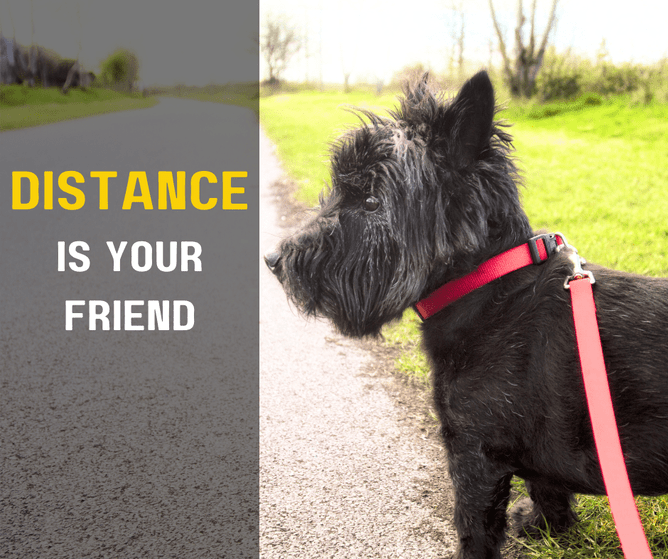Distance is Your Friend
Critical Distance
This is the point where your dog may go from being alert to a trigger to showing barking, lunging or other ‘reactive’ behaviours. It can be a fine line! Your aim is to keep your dog ‘under threshold’ and within their ‘critical distance’ wherever possible.
Distance Is Your Friend
Repeat after us! 📢
If your dog gets worried by other dogs, people, kids on bikes, cats, motorbikes, trucks (whatever the trigger), and they stare, bark, lunge, growl or show other distance increasing behaviours, your best course of action at the time is to create distance.
How do you do this?
• Feathering the lead and encouraging your dog to move
• Move into your dog’s peripheral to get their attention
• Gentle pressure on your dog’s lead
• Move your feet
• Look in the direction you want to go
• Find it game (toss treats away from the trigger)
There isn’t time to train if you dog is over threshold. They won’t be able to learn. So, create distance or wait it out until the trigger moves away.
Risk Assessment
Learn to do a risk assessment for your dog when out and about. This means thinking about what triggers may appear. While this is hard to predict, learn how to use the environment to block your dog’s vision such as hedges, trees and parked cars.
Over time, you will also learn how to maintain the right distance for your dog to keep them calm and relaxed.
It Can Change 😔
The tricky thing for pet parents is that your dog’s critical distance can change on any given day. Many factors can affect this – e.g., weather, if your dog is feeling unwell, trigger stacking and more.
Don’t beat yourself up if you do misread your dog. Over time you will get better and better at learning how your dog can cope in different situations.
Please don’t punish your dog for reacting. This will only create a negative association with the trigger, make you seem scary and unpredictable and may cause your dog’s reaction to escalate in the future.
Contact us for dog training help or help with your dog's reactivity.

